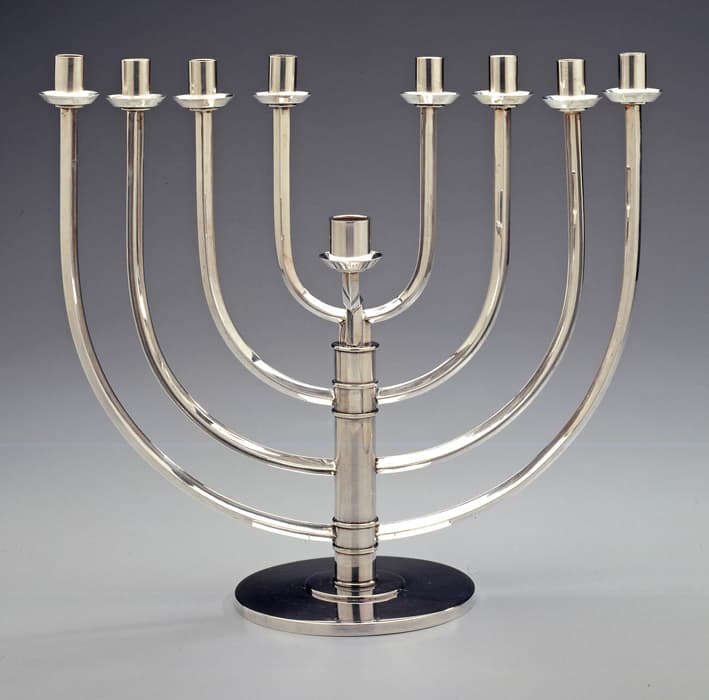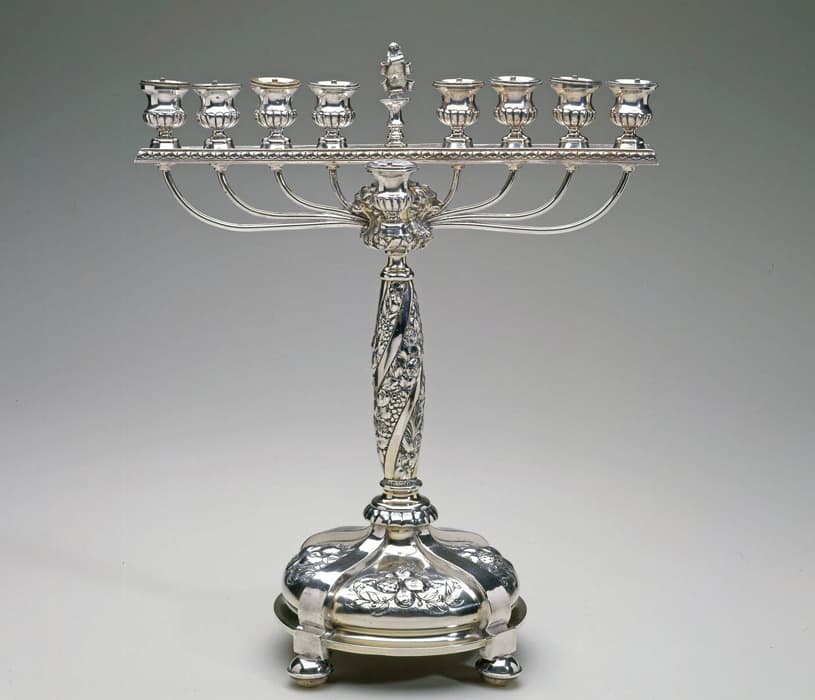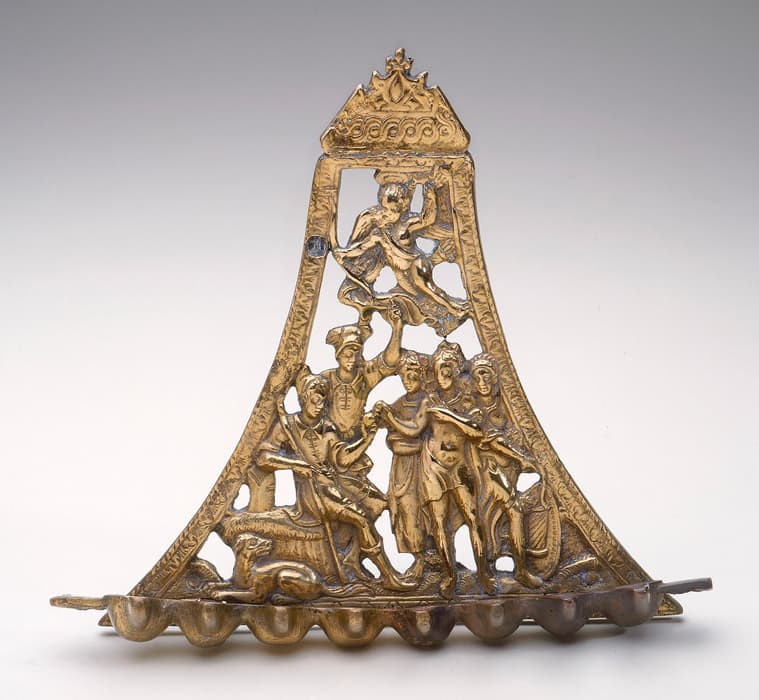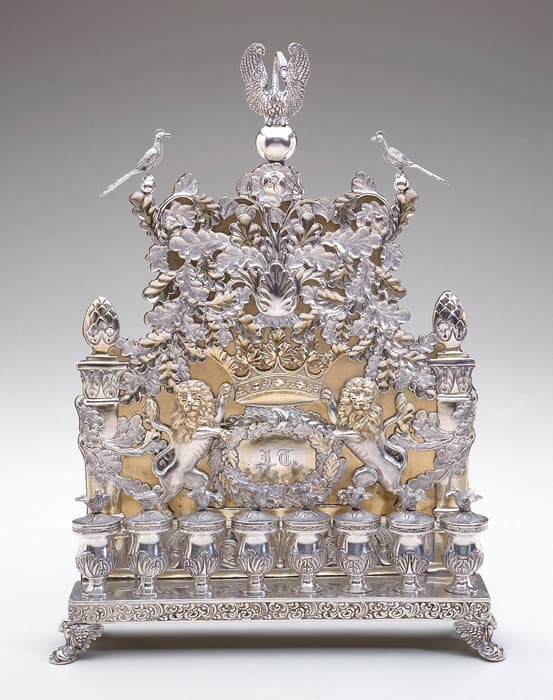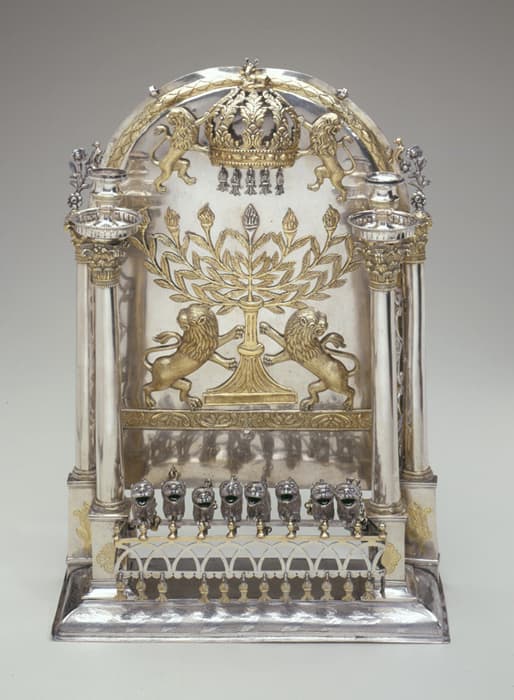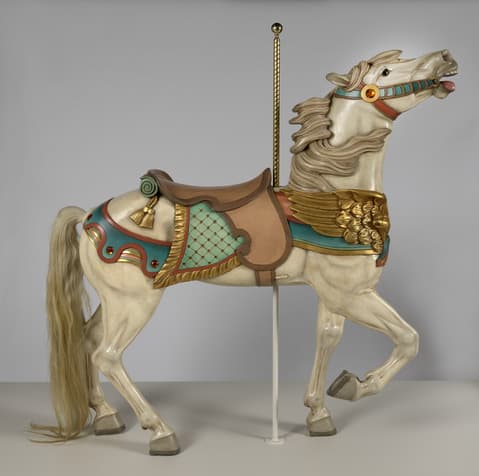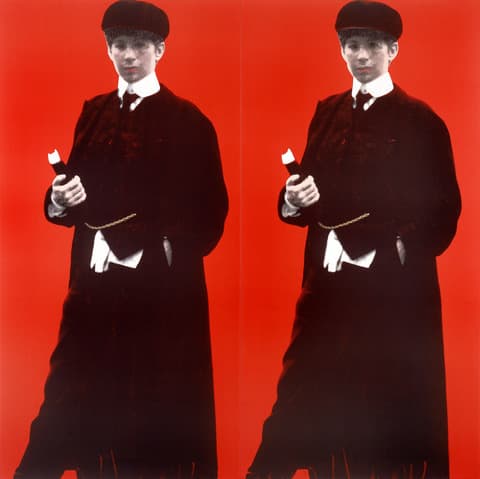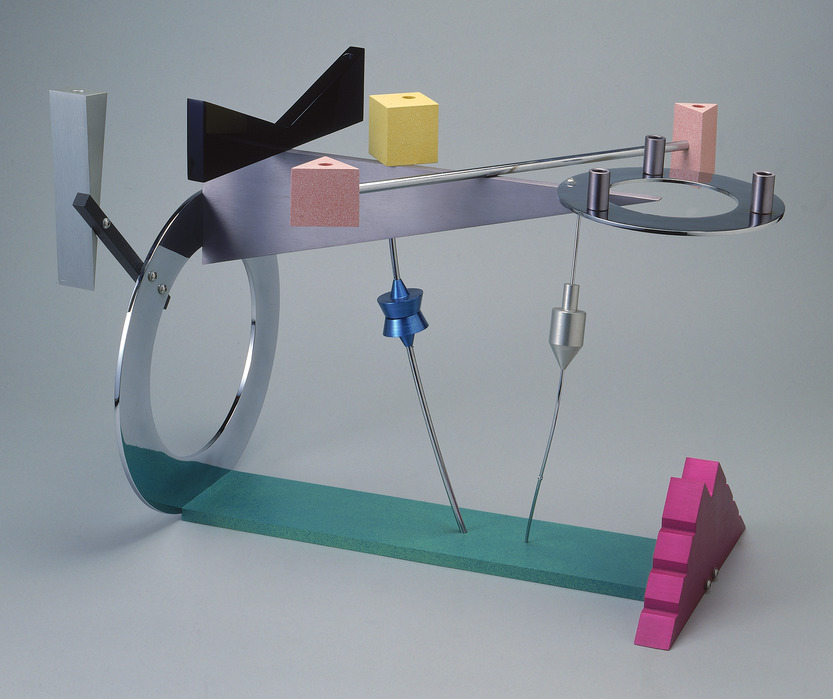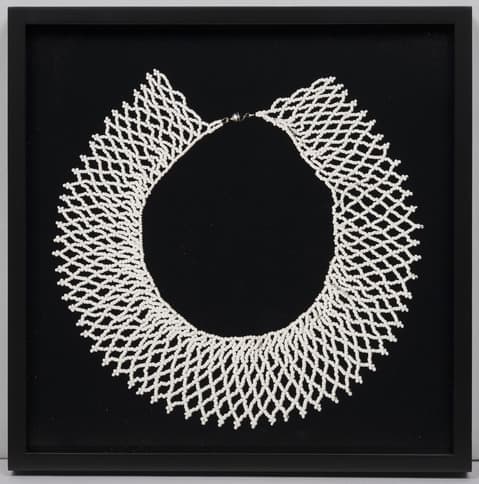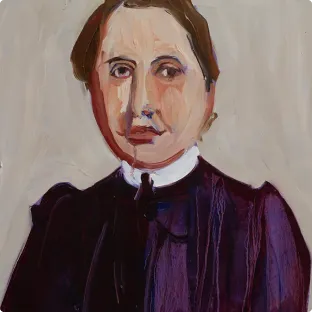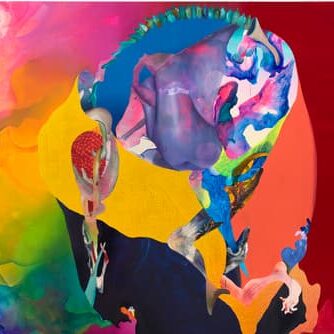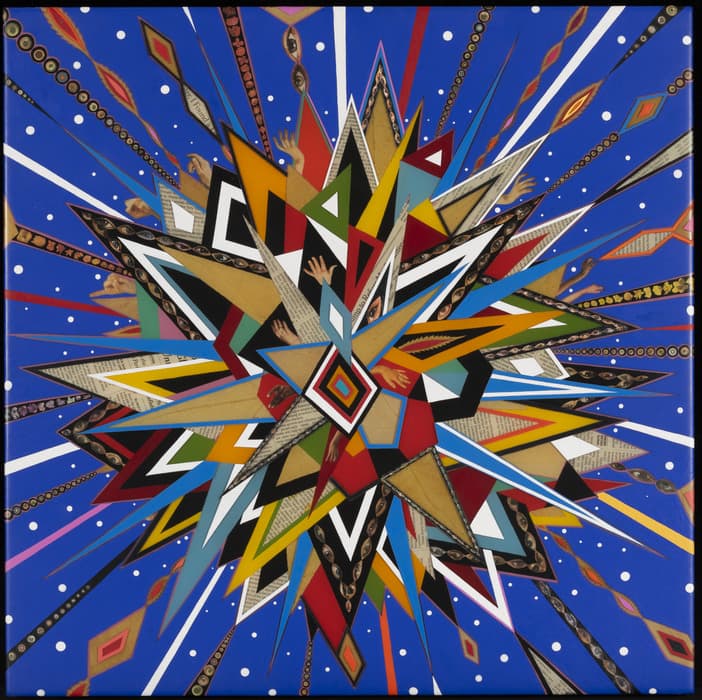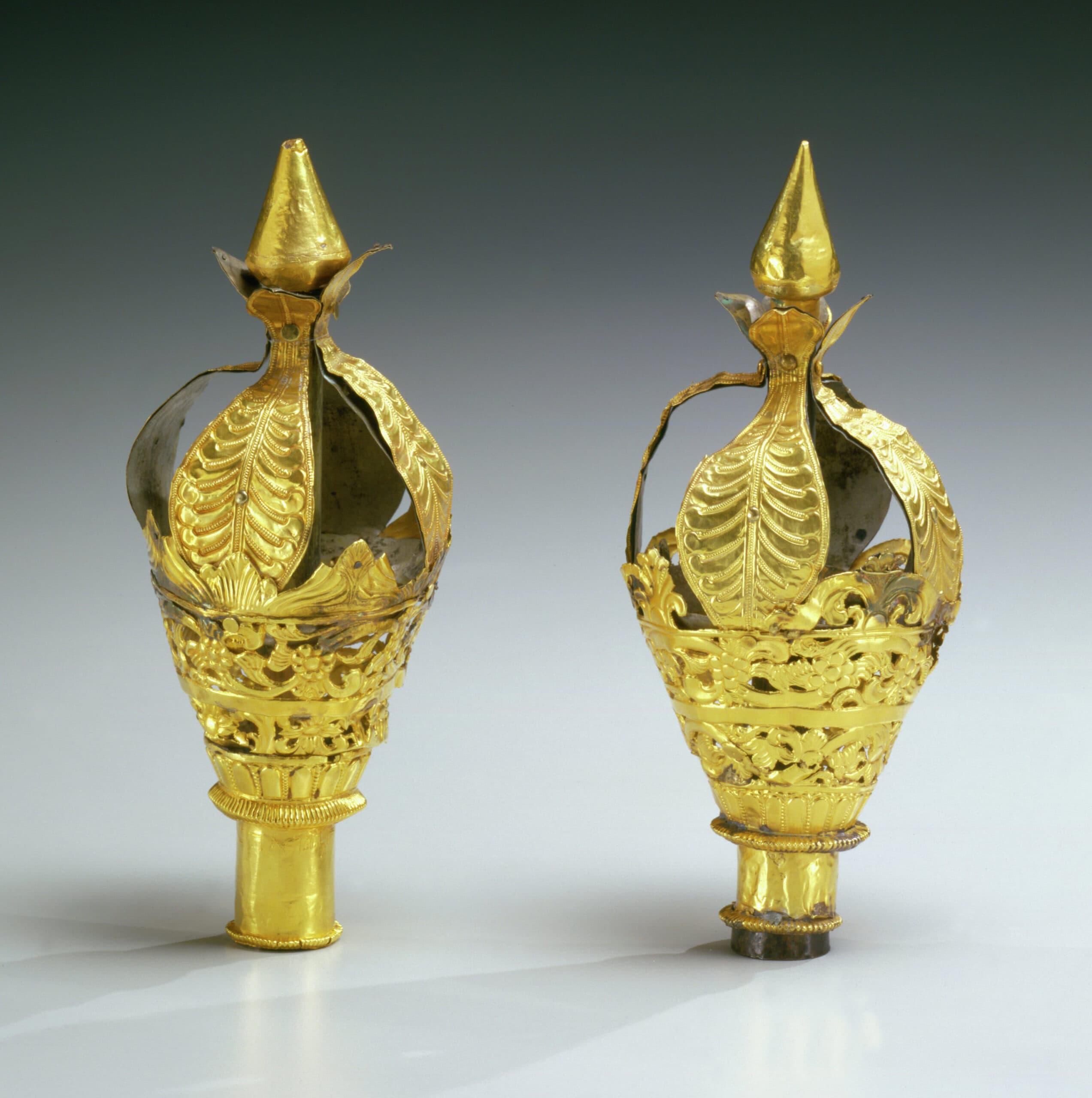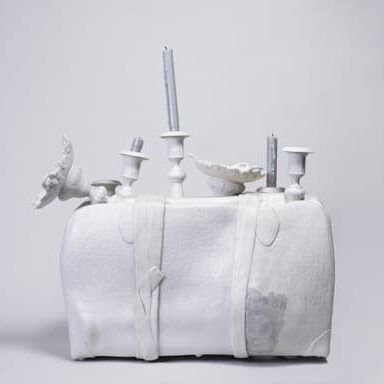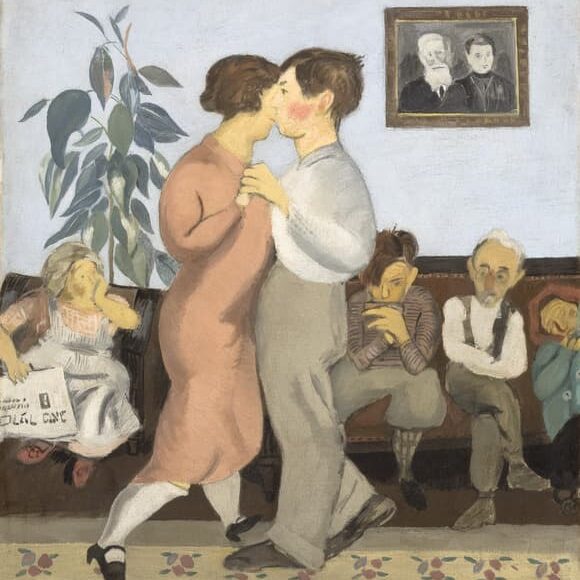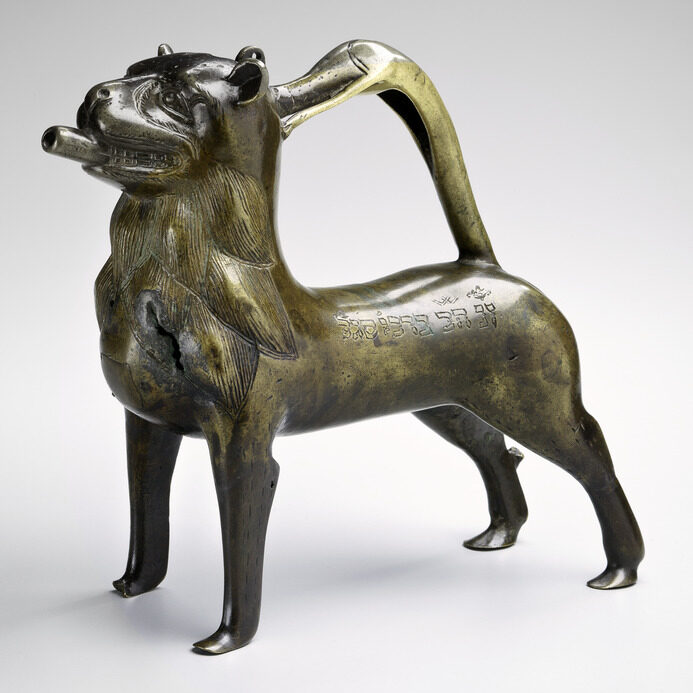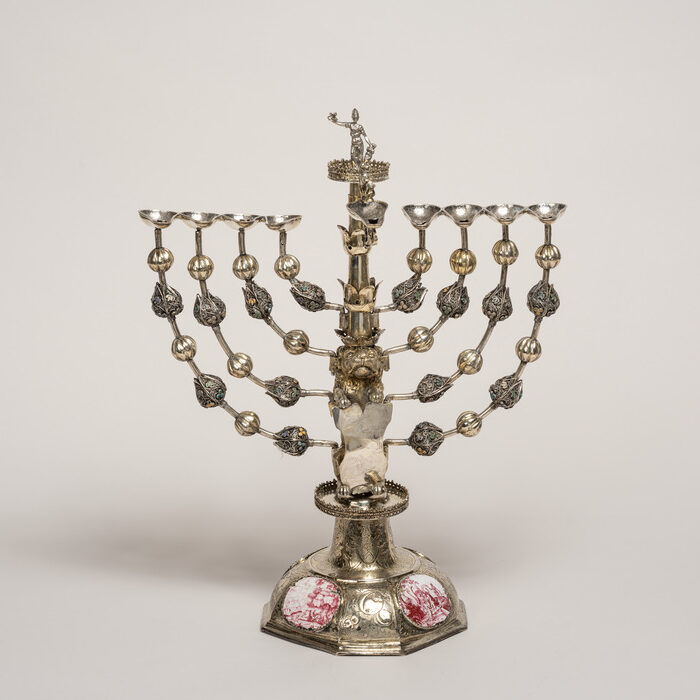A Hanukkah Project: Daniel Libeskind’s Line of Fire
Daniel Libeskind, an international figure in architecture and urban design, creates a bold and stunning installation with a selection of 40 Hanukkah lamps from the Museum’s renowned collection.
Daniel Libeskind, an international figure in architecture and urban design, creates a bold and stunning installation entitled Line of Fire with a selection of Hanukkah lamps from the Museum’s renowned collection. The design returns to a form first developed in his 1988 sculptural construction also entitled Line of Fire. Its main component was a zigzag structure whose color, irregular lines and unusual angles challenged the conventions of modern architecture. Libeskind has continued to use the Line of Fire in subsequent building designs, where it has come to symbolize the continuity of Jewish existence through sudden changes in circumstances, some of them catastrophic. For example, the jagged shape of the Jewish Museum in Berlin represents the difficult path of Jewish life in that city. In contrast, the second-floor exhibition hall of The Contemporary Jewish Museum (2008), with its sharp angles and jutting overlooks, provides spacious vistas evoking the culture of freedom in San Francisco.
In the presentation here, the Line of Fire becomes a support for a selection of the museum’s Hanukkah menorahs. It embodies the central ritual of Hanukkah — the kindling of flames in commemoration of an ancient victory for religious freedom. According to legend, a miracle occurred as the Jews gave thanks for divine intervention in the struggle. A one-day supply of consecrated oil necessary for worship in the newly cleansed Jerusalem Temple burned for eight days, enough time to produce more oil. Libeskind’s installation and his selection of quotes seen on the blue panels create an evocative metaphor for the spiritual and regenerative power of fire.
—Susan L. Braunstein, Curator of Archaeology and Judaica
About the Artist
Daniel Libeskind was born in 1946 in Lodz, Poland. After a few years in Israel, his family eventually settled in the United States. Libeskind studied music in Israel, becoming a virtuoso performer before leaving this career to study architecture. He likens his work to a musical composition in which every note is precisely placed within a rigid structure, yet produces an emotional impact. The child of Holocaust survivors who lost most of their family during the war, Libeskind brings a sense of trauma and memory to an architecture that seeks to find hope in the present.
Libeskind began his architectural career as an academic and theoretician, creating drawings and small constructions whose concepts became embedded in his later buildings. His first commission was awarded in 1989 for the Berlin Jewish Museum, which opened in 2001. Subsequent projects include Jewish museums in Osnabrück (Germany), Copenhagen, and San Francisco, and additions to museums in Denver, Manchester, Toronto, and London, as well as concert halls, convention centers, universities, residences, and shopping malls. He is the master architect for the World Trade Center reconstruction site.
In the Press
“Mr. Libeskind. . . is a veritable rock star”
— The New York Times, “Daniel Libeskind on a New Show of Menorahs” (11/17/2010)
“Libeskind’s design. . . has come to symbolize the continuity of Jewish existence even through catastropic circumstances.”
— The New York Times, “The Lights Fantastic” (11/18/2010)
This exhibition has been made possible by the Barbara S. Horowitz Contemporary Art Fund.
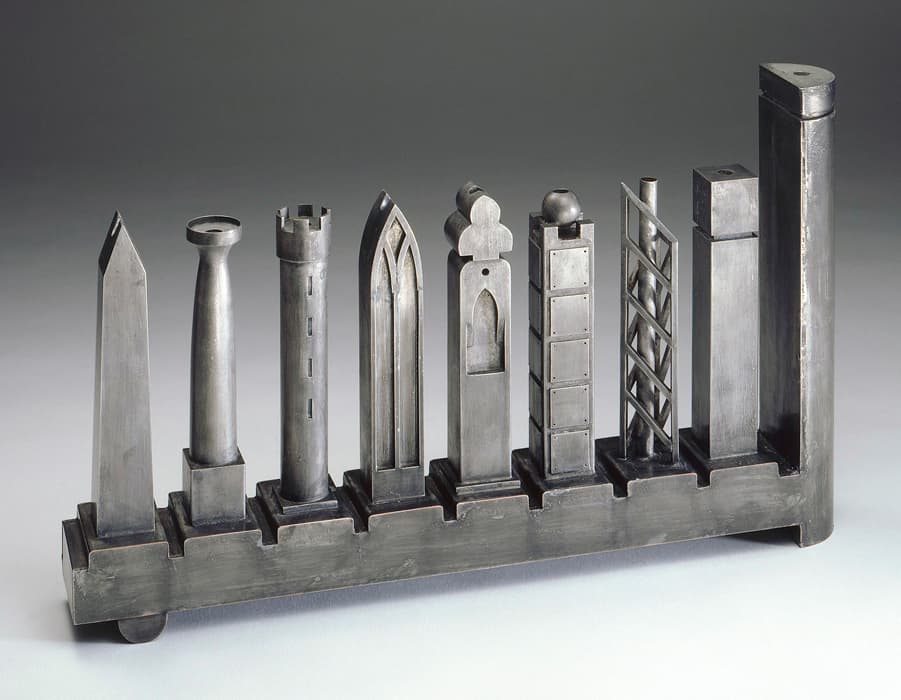
Hanukkah Lamp, Richard Meier (American, b. 1935), New York, United States, 1985, tin-coated copper, 11 13/16 x 13 3/4 x 2 in. (30 x 34.9 x 5.1 cm). The Jewish Museum, New York. Purchase: Samuel and Rose Riemer Private Foundation Gift, 1998-31

